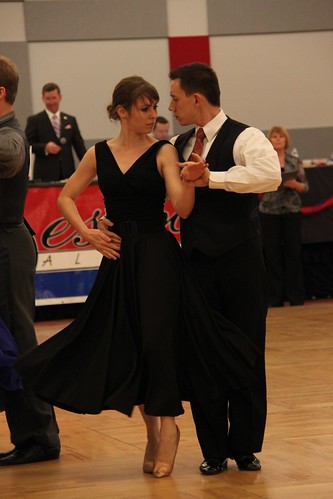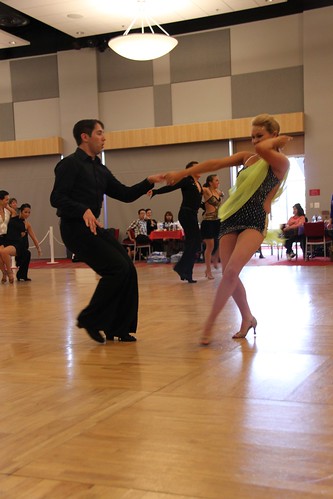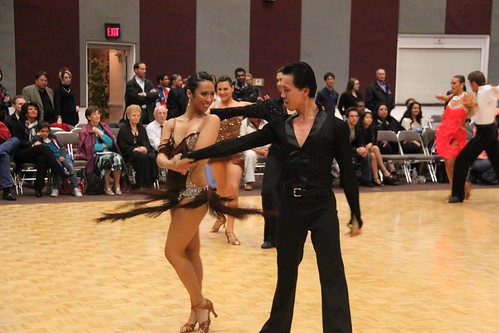 2011 UNLV Desert Challenge — IMG_2640.JPG, originally uploaded by Titoxd
2011 UNLV Desert Challenge — IMG_2640.JPG, originally uploaded by TitoxdWe've been trying to draw parallels between ballroom dance partnerships and partnerships outside dance, and so far we have drawn a few interesting conclusions. However, dance really has a lot in common with life in general. Let's consider another example.
If you have two professional dancers who are performing an exhibition, and they have never danced with each other before (such as what happens in a Jack-and-Jill contest), chances are that they will look pretty good. Their technique will be [hopefully] flawless, and they will entertain the crowd with their flashy moves and their acting. (Ballroom dance does require some theatrics every now and then.) However, while both persons will move a lot, chances are that the combination will not move the audience, as my friend Jee would put it. If there are any disparities in skill or talent, this effect is magnified, and it will seem at times that one member of the partnership is showing off his moves, making his/her partner look bad in the process. As such, the partnership acquires a subtractive character, as the result of the partnership is lesser that the sum of the dancers' individual skill.
On the other hand, a professional partnership who has been dancing together for a considerable period of time is capable of adding a completely different dimension to their performance. I have watched couples who, by virtue of knowing each other's strengths and weaknesses, are able to tailor routines to maximize the appeal of their dance simply by working with each other. These partnerships are additive, instead of subtractive, as they are not based in showing off flashy trash.
Some couples are able to use this communication so effectively that they completely hypnotize a crowd, simply by doing basic steps in a way that exudes the characteristic of the dance. These are the couples that have reached a level of greatness seldom found anywhere else. The couple seduces each other during a Tango, and seduces the entire audience at the same time. Alternatively, the couple's Rumba makes the public wonder what the dancers really did after the performance. Outside the ballroom, the same effects can be achieved simply by knowing your partner, being open about your needs, working off each other's strengths, and avoiding each other's weaknesses.





